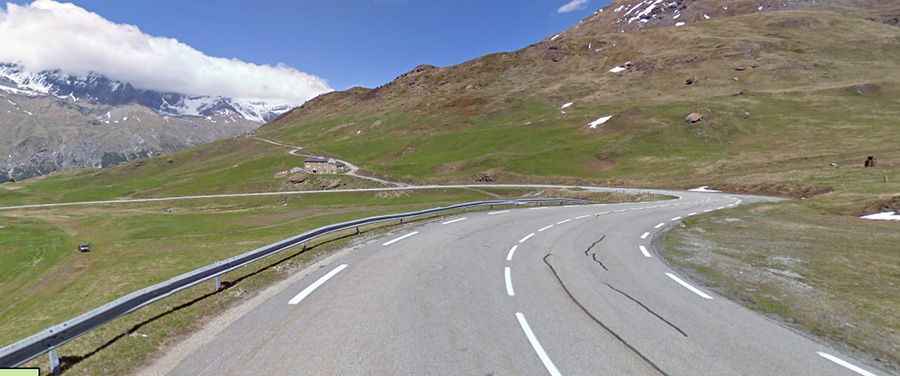An epic road to Col du Mont-Cenis in the Alps
Col du Mont-Cenis is a high mountain pass at an elevation of 2,094m (6,870ft) above sea level, located in the Savoie department in the Auvergne-Rhône-Alpes region of France.

Where is Col du Mont-Cenis?
The pass, also known as Colle del Moncenisio, is located in the southeastern part of the country, near the Italian border, beside the eponymous lake. The pass was the border between France and Italy until the 1947 Treaty of Paris when it passed completely to France.
Is the road to Col du Mont-Cenis paved?
The road to the summit is totally paved in good conditions. It’s called D1006 and runs north-south from Lanslebourg-Mont-Cenis (in France) to Susa (in Italy).
Is the road to Col du Mont-Cenis steep?
The climb has been featured in the Tour de France and the Giro d'Italia bicycle races. The road is steep in parts, hitting a maximum gradient of 12.8% and featuring a famous sequence of five hairpins. The surface of this wide road is very regular, with a constant slope of 7%.
Is the road to Col du Mont-Cenis worth it?
Tucked away on the boundary of the Cottian and Graian Alps, the drive offers beautiful panoramic views of the snowy peaks of the National Park La Vanoise.
Is Mont Cenis Pass open?
Set high at the heart of the Mont-Cenis Range, the road to the summit is seasonally closed. On the French north side, the pass is open between May 15 and October 31. On the Italian south side, it is open year-round. The area is pretty busy on weekends with locals and tourists.
When was the road to Col du Mont-Cenis built?
Some historians believe this pass was used by Hannibal when he made his famous elephant Alps crossing. It is very nice around the lake, and there are many rough-stuff routes to explore for those with a mountain bike. People have been crossing the Col du Mont Cenis for thousands of years. Both Constantine the 1st and Charlemagne crossed the pass with armies. It was the most frequently used passage between Italy and France in the Middle Ages. When the French ports were blockaded by the British after the Battle of the Nile, Napoleon ordered an improved road built over the pass. Finished in 1810, it allowed carts and carriages to make the crossing.